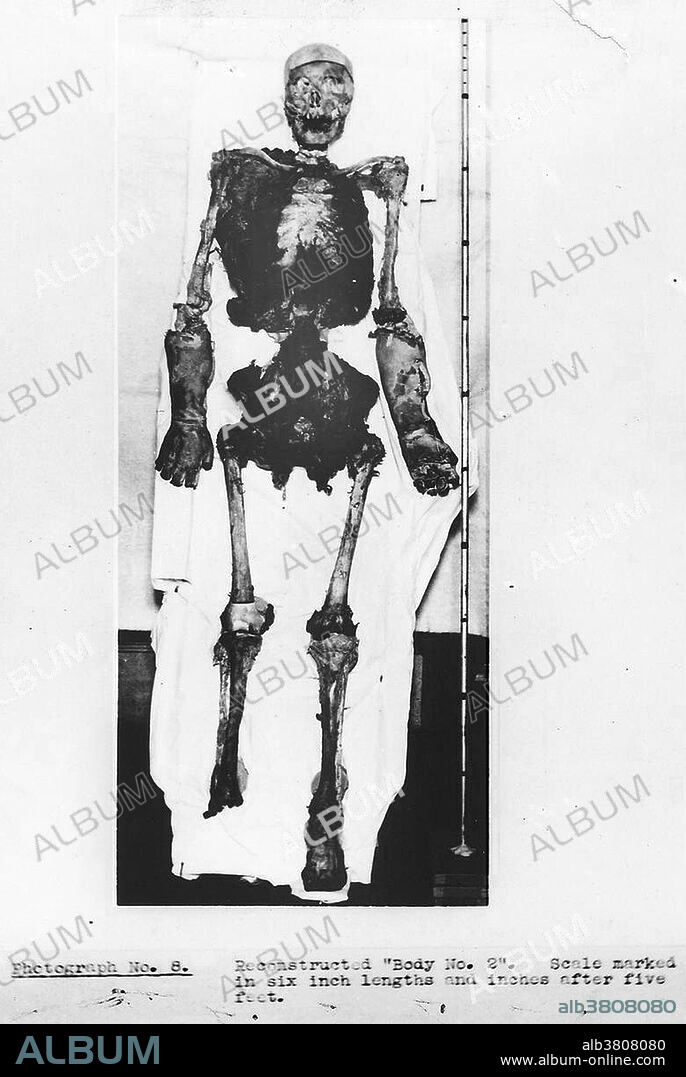alb3808080
Skeletal Reconstruction, Buck Ruxton Murder

|
Ajouter à une autre Lightbox |
|
Ajouter à une autre Lightbox |



Avez-vous déjà un compte? S'identifier
Vous n'avez pas de compte ? S'inscrire
Acheter cette image.
Sélectionnez l'usage:

Titre:
Skeletal Reconstruction, Buck Ruxton Murder
Légende:
Voir la traduction automatique
Isabella Ruxton reconstructed body no. 2, 1935. Because the body parts of the two victims were jumbled and had to be reassembled, newspapers called the case the "Jigsaw Murders." Buck Ruxton (1899-1936) was a Parsi doctor and murderer who strangled his wife Isabella. In order to prevent their housemaid, Mary Jane Rogerson, from discovering his crime before he could dispose of the body, he suffocated her too. Ruxton then proceeded to dismember and mutilate both bodies to hide their identities. The case is remembered now for the innovative forensic techniques employed in solving it. The bodies were identified using the fledgeling techniques of fingerprint identification, forensic anthropology to superimpose a photograph over the X-ray of a victim's skull and forensic entomology to identify the age of maggots and thus the approximate date of death. This was one of the first cases where such forensic evidence was successfully used to convict a criminal in the United Kingdom.
Crédit:
Album / NLM/Science Source
Autorisations:
Modèle: Non - Propriété: Non
Questions sur les droits?
Questions sur les droits?
Taille de l'image:
2700 x 4033 px | 31.2 MB
Taille d'impression:
22.9 x 34.1 cm | 9.0 x 13.4 in (300 dpi)
Mots clés:
CHAMP • CONVICTION • COUPABLE • EPOUSE • EPOUX (MARI) • ÉPOUX • ETRANGLEMENT • ÉTRANGLER • LÉGISTE • MARI • MEDICAL • MORT ETRANGLER • RECHERCHE • RECONSTRUCTION • STRANGULATION • TUER • VICTIME • XXE SIECLE
 Pinterest
Pinterest Twitter
Twitter Facebook
Facebook Copier le lien
Copier le lien Email
Email
